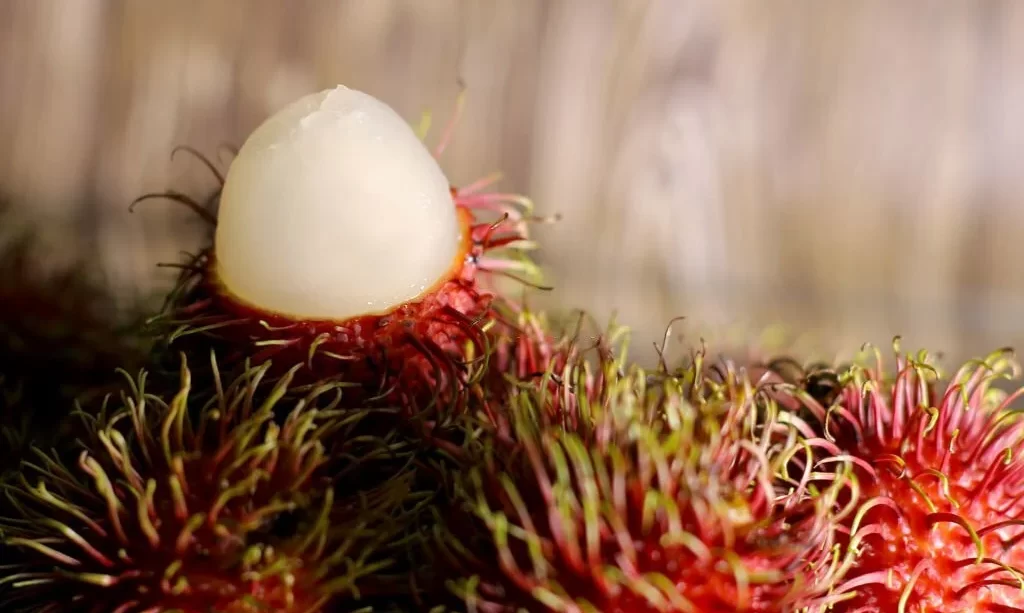Rambutan, with its hairy exterior and sweet, juicy flesh, is a tropical fruit that hails from Southeast Asia. This exotic delicacy not only delights the taste buds but also adds a touch of vibrancy to fruit platters and desserts. While its unique appearance might seem a bit intimidating, learning how to cut a rambutan can unlock the succulent goodness within. This article aims to demystify the process, providing a comprehensive guide on understanding the anatomy of a rambutan and the steps to cut and enjoy this delicious fruit. Whether you’re a seasoned fruit enthusiast or encountering rambutan for the first time, this guide will walk you through the process of preparing and savoring this tropical treat.
Rambutan Anatomy
To navigate the process of cutting a rambutan, it’s essential to familiarize yourself with its anatomy. The fruit has a distinctive appearance, characterized by a leathery outer skin covered in soft, hair-like spines. Beneath this outer layer lies the edible flesh, which is juicy, sweet, and slightly acidic. At the center of the fruit is a single seed, typically brown and smooth.
Identifying the key components of the rambutan is crucial for a seamless cutting experience. The outer skin needs to be gently sliced through to reveal the juicy fruit inside, and the seed must be separated from the edible flesh for a delightful eating experience. Understanding the placement of these elements sets the stage for a successful and enjoyable encounter with rambutan, allowing you to appreciate both its unique appearance and delicious taste.
Tools Needed for Cutting Rambutan
Before embarking on the process of cutting a rambutan, it’s essential to gather the right tools. While cutting a rambutan is relatively straightforward, having the appropriate equipment ensures a smooth and efficient experience. The primary tool required is a sharp knife. A small, pointed knife is ideal for making precise incisions through the tough outer skin without damaging the juicy fruit inside. Ensure the knife is clean and well-maintained to uphold food safety standards.
Optional tools include a cutting board for stability and cleanliness, as well as a bowl or plate to catch any juices that may be released during the cutting process. By having these tools ready, you can approach the task of cutting rambutan with confidence and precision.
Step-by-Step Guide on How to Cut a Rambutan
Now that you’ve gathered your tools, let’s delve into the step-by-step process of cutting a rambutan:
Washing and Preparing the Rambutan:
- Rinse the rambutan under cool, running water to remove any dirt or debris from the outer skin.
- Pat the fruit dry with a clean towel.
Making the Initial Cut through the Outer Skin:
- Place the washed rambutan on a cutting board.
- With a sharp knife, make a shallow cut around the circumference of the fruit, being cautious not to cut too deep.
Revealing the Edible Fruit Inside:
- Gently twist the rambutan open along the cut you made, exposing the juicy, translucent flesh.
- Avoid squeezing too hard, as this can force the seed to come into contact with the flesh.
Removing the Seed from the Fruit:
- Once the fruit is open, identify the seed in the center.
- With your fingers or the tip of the knife, separate the seed from the flesh. The seed should easily come away from the edible part.
Optional: Peeling the Fruit for a Seedless Experience:
- If you prefer a seedless experience, you can peel the fruit away from the seed before enjoying.
By following these simple steps, you’ll master the art of cutting rambutan, unlocking the delicious, juicy fruit within. Remember to handle the fruit gently to preserve its integrity and enjoy the unique flavor and texture that rambutan has to offer.
Serving and Enjoying Rambutan
Once you’ve successfully cut a rambutan, the next step is to savor the juicy goodness. Presenting the cut rambutan attractively on a plate or in a bowl adds to the overall dining experience. Rambutans are often enjoyed fresh and can be served as a refreshing snack or as part of a tropical fruit salad. The translucent, succulent flesh is a delight to the senses, offering a sweet and slightly acidic flavor that captures the essence of tropical indulgence.
Suggested serving methods include enjoying rambutan on its own, combining it with other tropical fruits, or incorporating it into desserts and beverages. The versatility of rambutan allows you to get creative in the kitchen and explore various culinary possibilities.
Conclusion
In conclusion, cutting and enjoying rambutan is a delightful experience that brings a taste of the tropics to your table. From understanding the anatomy of the fruit to mastering the art of cutting and serving, rambutan offers a unique and flavorful addition to your culinary repertoire.
As you explore the steps outlined in this guide, remember that rambutan is not just a fruit; it’s an opportunity to indulge in a tropical treat that captivates the senses. Whether enjoyed on its own or incorporated into creative dishes, rambutan invites you to savor the richness of its juicy, sweet flesh. So, embrace the adventure of rambutan, and let this exotic fruit add a burst of flavor to your culinary journey!




